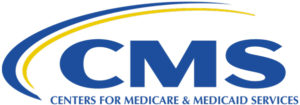
The Centers for Medicare & Medicaid Services announced late Thursday that it will delay adjustments to nursing homes’ Patient Driven Payment Model pay rates until next year. It also will give providers just a 1.2% pay raise for fiscal 2022.
Industry stakeholders had widely feared that PDPM pay rates would be cut starting Oct. 1 after CMS had surprised many by asking for comments in April. At the time, the agency stated that the new pay system had disbursed 5%, or $1.7 billion, more than intended after its onset Oct. 1, 2019 — a figure contested by many operators as overly inflated, given ensuing pandemic conditions.
The comment period, however, wound up buying fearful providers more time, as CMS acknowledged that its original analysis might not have accounted for pandemic factors appropriately.
“In light of … comments, as well as the importance of addressing any existing overpayments under the SNF PPS, we intend to utilize these comments to refine the data we have collected in developing a proposed methodology that will be included in the FY 2023 SNF PPS Proposed Rule,” CMS explained Thursday.
The agency also announced that the disappointing 1.3% PPS pay hike it proposed in April is being finalized at 1.2%, good for an infusion of an additional $410 million in Medicare Part A payments in fiscal 2022.
It derives from an initial 2.7% proposed pay raise, trimmed by a forecast error correction of 0.8% and a productivity adjustment of 0.7%.
CMS added that market basket impact figures do not incorporate the SNF VBP reductions that are estimated to be $184.25 million in FY 2022.
New quality reporting measures
The new rule also updates metrics used in the SNF Quality Reporting Program. SNFs that do not meet reporting requirements for any of the metrics can be subject to a 2% reduction in their annual update.
Starting in Fiscal Year 2023, facilities will have to report healthcare-associated infections, or HAIs, requiring hospitalization. Sepsis, urinary tract infection, and pneumonia are among the kinds of infections CMS will track, noting that HAIs often result from “inadequate patient management following a medical intervention, such as surgery or device implementation, or poor adherence to protocol and antibiotic stewardship guidelines.”
CMS said it wants to be able to monitor characteristics associated with facilities that have notably higher HAI rates to encourage “improved quality of care.”
Despite some resistance from provider groups during the public comment period, the agency will also use COVID-19 vaccination among healthcare personnel as a new metric “to assess whether SNFs are taking steps to limit the spread of COVID-19 among their HCP, reduce the risk of transmission within their facilities, and help sustain the ability of SNFs to continue serving their communities throughout the COVID-19 PHE and beyond.”
The originally proposed rule in April was more complex than usual, with many facets for providers and other stakeholders to consider, particularly while still struggling with effects of the pandemic.
Please check back for updates to this developing story.



